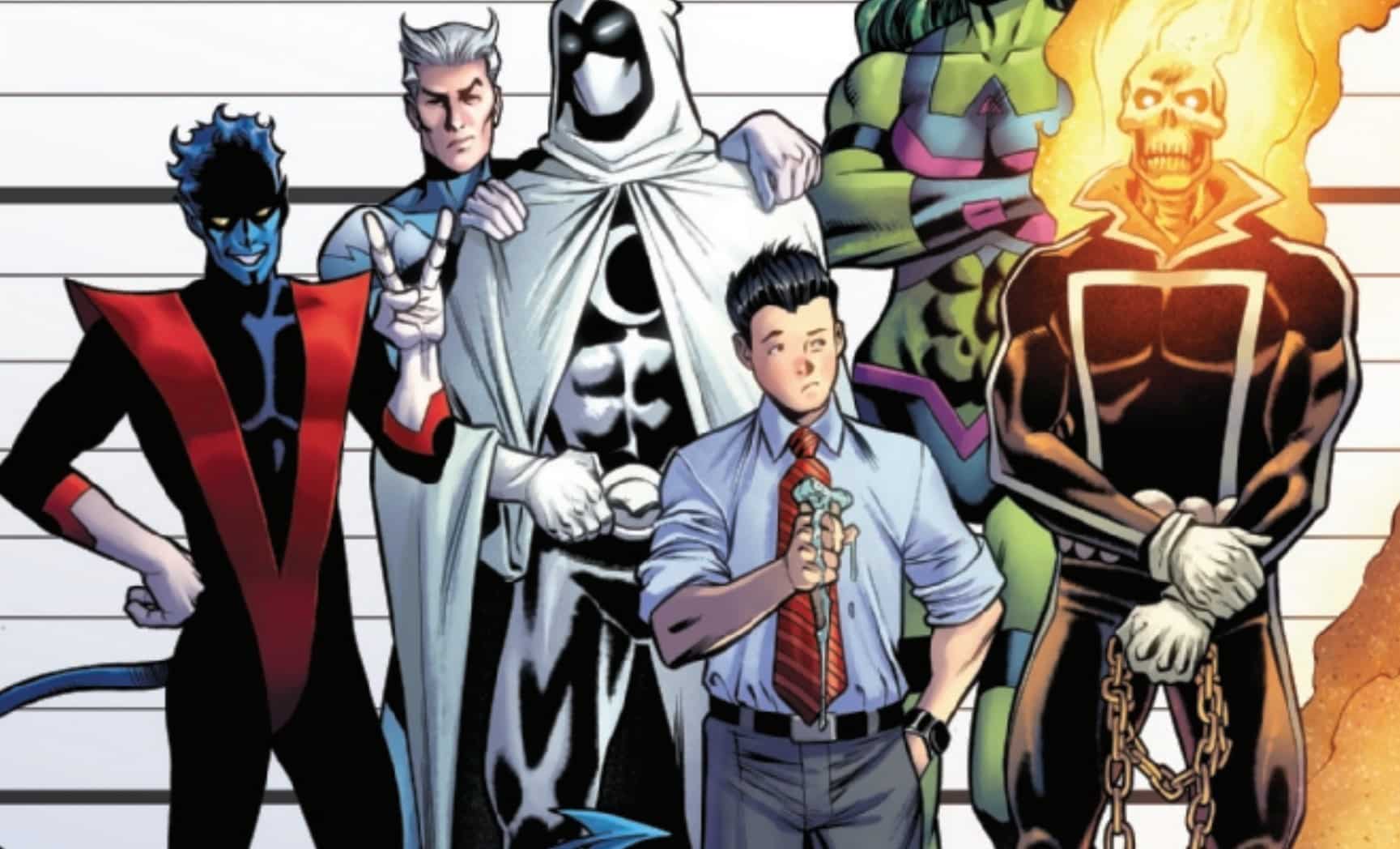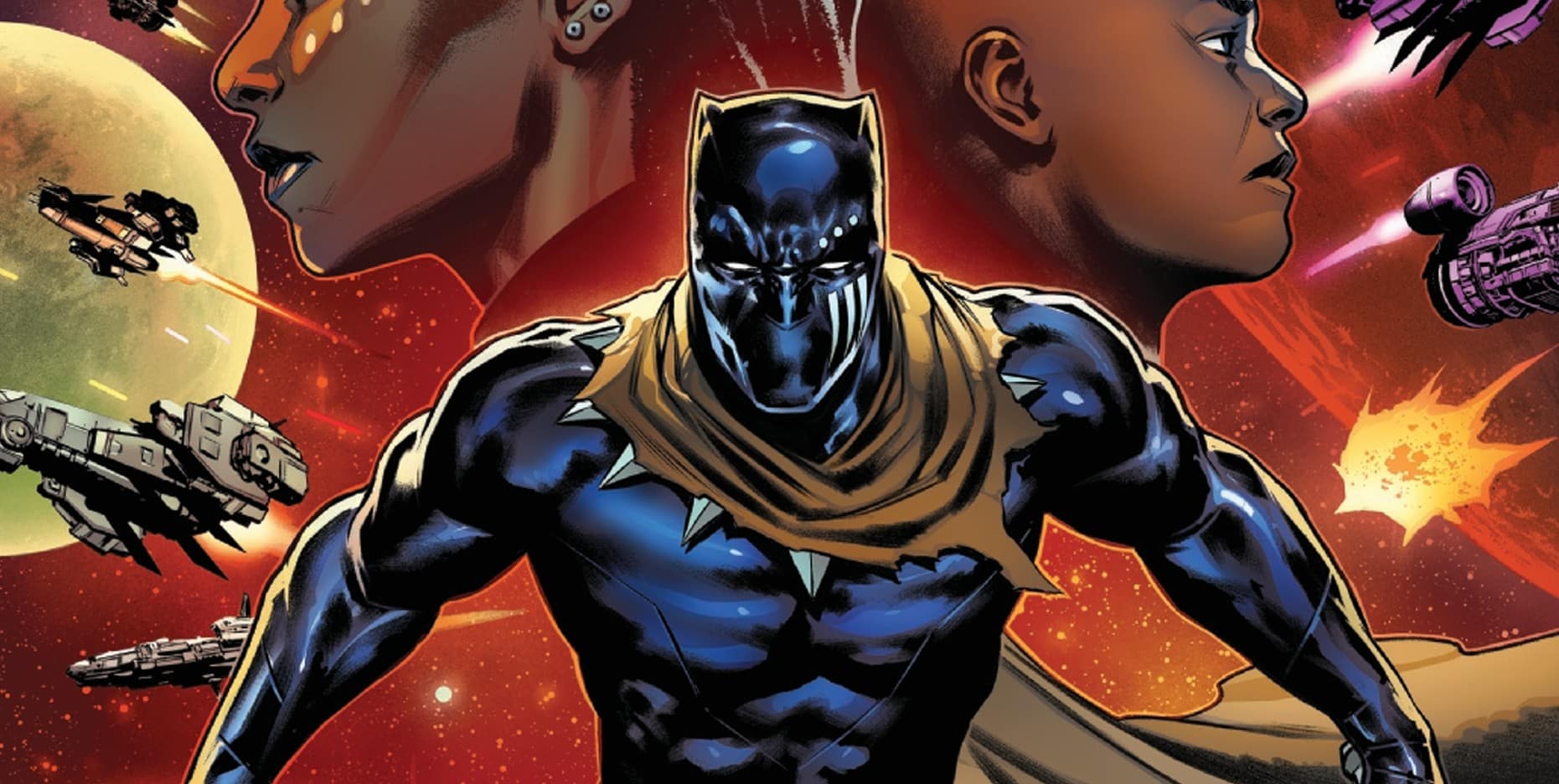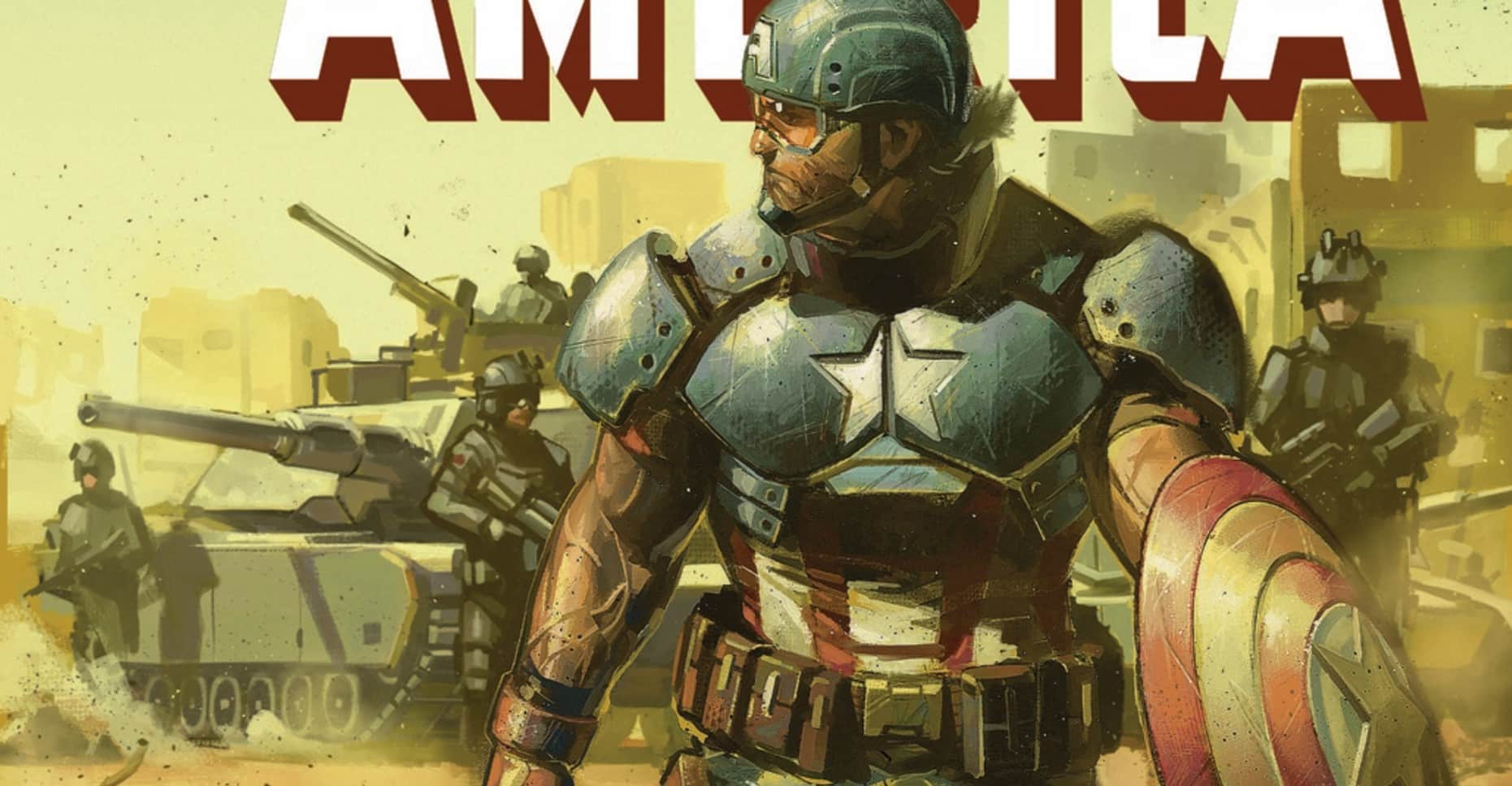Things break. That’s why skilled repair people, and their legal teams, are always in demand. Especially in Marvel Comics New York. Damage Control #1 is written by Adam Goldberg, Hans Podiomoff and Charlotte (Fullerton) McDuffie, drawn by Will Robson and Jay Fosgitt, colored by Ruth Redmond and lettered by Clayton Cowles.
Damage Control began as a joke that was more than a joke: a company, staffed entirely by people without superpowers, that would clean up and build back parts of New York CIty wrecked by superhero fights. Of course, as a for-profit entity, they’d also collect payment from the heroes and villains, who might or might not carry insurance. One of the best bits from the original four-issue 1989-90 run, written by Dwayne McDuffie and drawn by Ernie Colon, followed account executive and reader stand-in John Porter; stylish, ultracompetent, goatee’d comptroller Albert Cleary; overworked CEO Anne Marie Hoag; and hard-hat-wearing, cigar-chewing foreman Lenny Ballinger as they attempted to collect an overdue bill from Doctor Doom. (The story was called “When Doom Defaults!”)
That run and the four more issues of its sequel (There’s also a two-issue run from the same years; don’t ask) combined in-jokes, office-sitcom jokes and jokes about how comics work: A construction project halts because one of the workers “just had an origin story.” It asked semi-serious questions about who pays for what, how insurance and accounting work in a superhero world, and what it’s like to make a living there. Those questions led to even more serious questions about who pays for what in the real world, and how company-owned comics inhibit or empower their employees. The stories were goofy as hell, but they invited (like all great comedy) analysis. They showcased atypical, stylized, cartoony art, especially when Kyle Baker drew Dwayne McDuffie’s stories. And — when Baker and McDuffie teamed up — they may have been the first Marvel comic series both written and penciled by Black creators. They spoke to Black experience, too. When our comic heroes watch Damage Control: The Movie, Cleary, by far the most dignified employee, splutters in dismay at his portrayal as a tricked-out blaxploitation-flick dude.
McDuffie (who went on to co-create Milestone Comics) made Damage Control self-aware, and politically savvy, and funny. The Marvel Cinematic Universe version of Damage Control is none of those things: It’s a government department that shows up at the end of superhero fights to take charge of powerful artifacts and clean up the physical mess. The new Damage Control, in the comics, splits the difference: They store artifacts, they’re government contractors, they’re not especially self-aware and they’re sketch comedy-level ridiculous, which is to say, don’t get your hopes up, but they’re fun.
The first issue follows Gus the intern and new-reader surrogate as he’s inducted into Damage Control by Bart the former intern and current employee. Bart and Gus make their way through a coffee shop where Moon Knight gets handed a coffee cup labeled “Moob Knife” and thence to the lobby in the Flatiron Building, where Man-Thing, Captain Marvel, Ms. Marvel, White Tiger, Howard the Duck and Nick Fury are all hanging out. I don’t know why they’re there.

Gus will, like all newbies in office comedies from the 1940s and 1950s, begin in the mailroom, which of course stretches into another dimension. He gets tired and gives up on delivering the very last envelope and shreds it to cover his tracks, thus provoking an interdimensional crisis. Also Ghost Rider’s flaming head melts Albert’s ice cream cake, which Gus was supposed to deliver, and Albert throws a screaming fit at the intern, exclaiming “I work my ass off day in and day out and look forward to a measly slice of ice cream cake once a year! That’s how horrible my life is!” That’s … not the Albert Cleary I remember from McDuffie’s Damage Control. “You can’t even comptrol your own temper,” Gus tells him. Also there’s a Nightcrawler cameo.
Dwayne McDuffie’s writing is a high bar for new writers to clear, but I think it’s fair to say that Adam Goldberg and Hans Rodionoff, screenwriters known for The Goldbergs and Man-Thing (respectively) do not clear it. They do, however, namecheck 1970s Marvel mascot Irving Forbush. But they make Nightcrawler call an intern “dummkopf.” Not in character, and not cool.
You know what’s cool, though? Charlotte Fullerton McDuffie, Dwayne McDuffie’s widow, gets to write the second story, and it’s even more ridiculous, with in-jokes keyed to new readers who know the MCU, not necessarily the comics. Fullerton has a stellar resume in kids’ animation, and the story feels like a script for a kids’ animation show. Maybe “Word Girl”? Or (if you’re old enough to remember it) Powerpuff Girls?
In this one Bart’s mom shows up at the Flatiron, gets a tour and ends up in what looks like the Damage Control gift shop, where she cuddles a teddy bear and winds up accidentally wearing the Reality Stone, the one Thanos is always trying to get. So Thanos shows up to fight her for it. The Reality Stone turns her into a puffy green dragon, and then she turns back into a no-nonsense, sensible-shoes, retirement-age mom, sans stone: That’s what she needs to defeat the mad purple Titan, who simply can’t handle her mom moods: “I”m not angry at you,” she tells him, “just very disappointed. … Now you go right back to Titan and think about what you’ve done.” And so he does.
The story looks nothing like most superhero comics. Instead it looks like a newspaper strip, a cuddly, big-curves, bold-lines, family-oriented, decades-old thing that my actual mom might well have grown up reading, with delightfully lettered sound effects. Think Carl Barks’ Donald Duck, with a bit of For Better or For Worse. And think one-liners. Thanos lifts the Flatiron Building off its foundation with one hand: WABASSH! Then he lets it back down: KATHUMP! Albert Cleary, this time confident and in character, shouts, “Thanos, you’ll pay for that! Literally!” Lawyers object when Thanos and Bart’s mom use catchphrases strongly associated with Spider-Man and the Hulk, and readers learn an important heroic lesson for anyone planning to cause major property damage within the five boroughs of New York: “With great power comes a great Con Edison bill.” Way to keep the lights on, Damage Control.
Does anyone need to read this comic book? Probably not (and if you want to see more realistic explorations of urban infrastructure and the aftermath of superhero fights, Busiek and Anderson’s Astro City is right over there). If you cared about the original McDuffie Damage Control, should you read this one? Sure. Just read the second tale first.
Stephanie Burt is Professor of English at Harvard. Her podcast about superhero role playing games is Team-Up Moves, with Fiona Hopkins; her latest book of poems is We Are Mermaids. Her nose still hurts from that thing with the gate.






